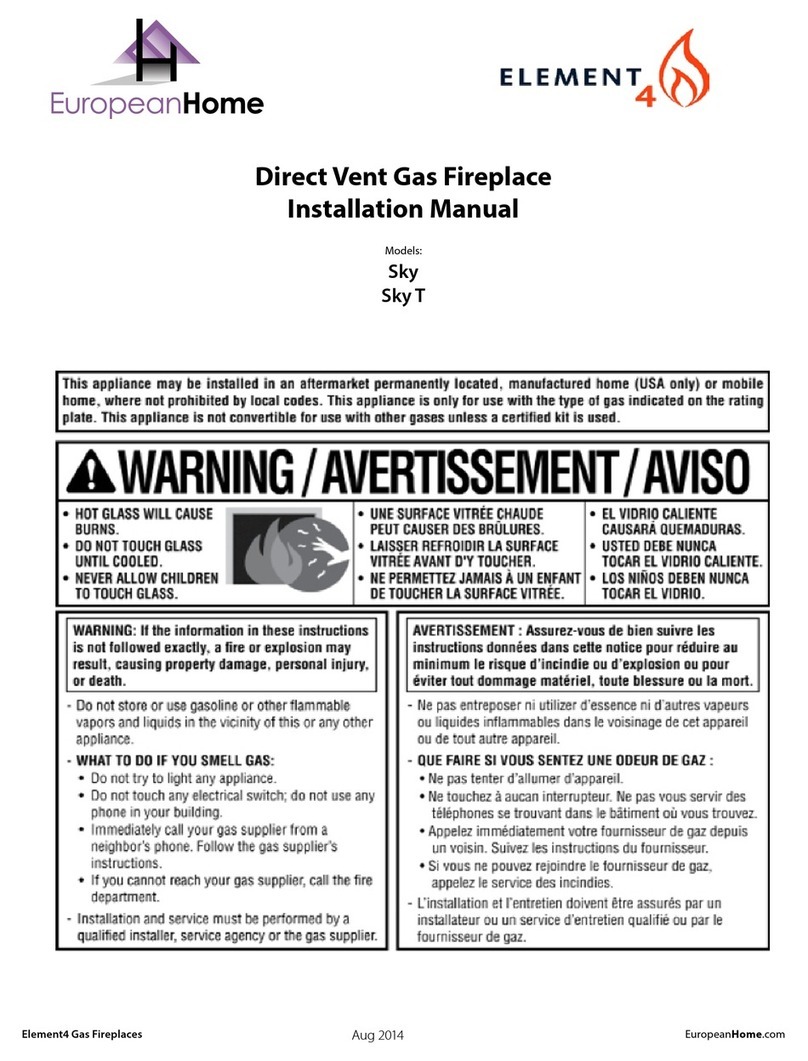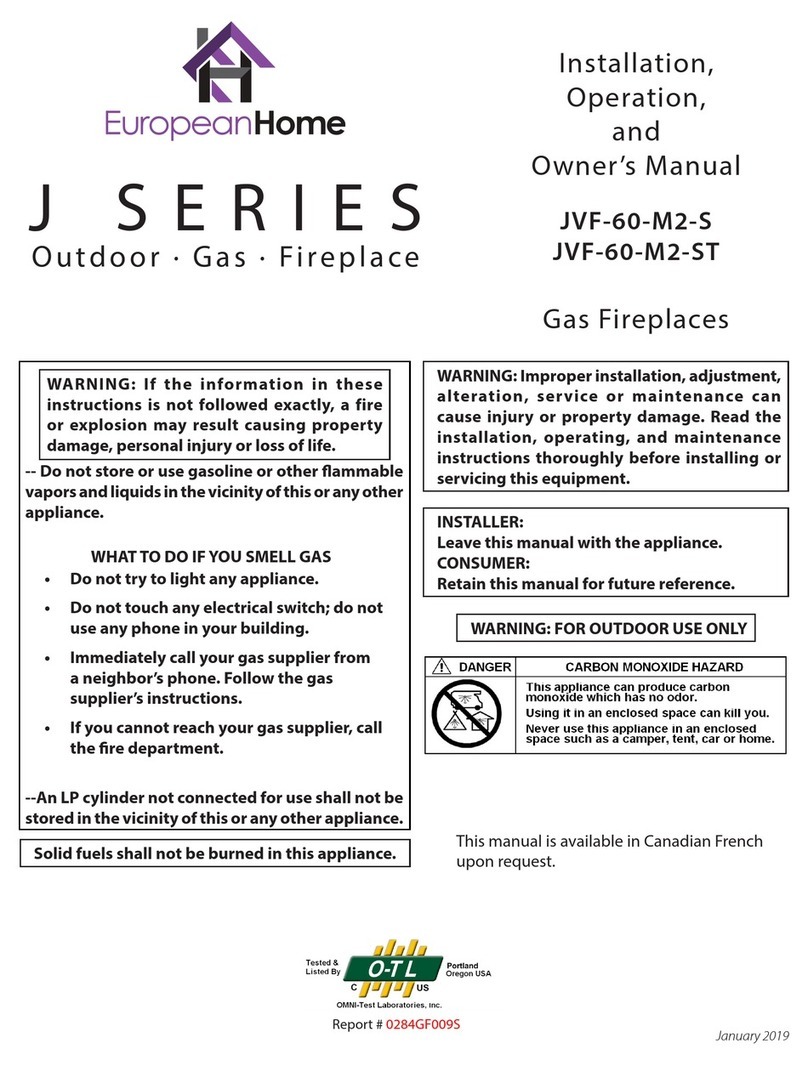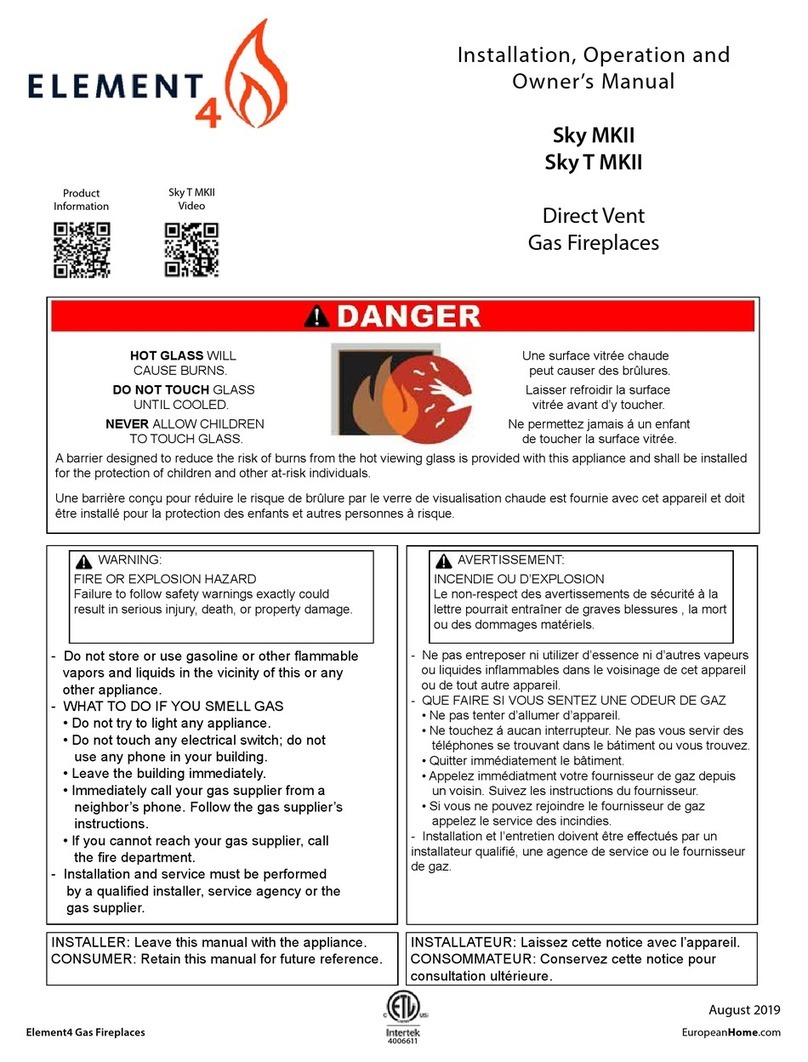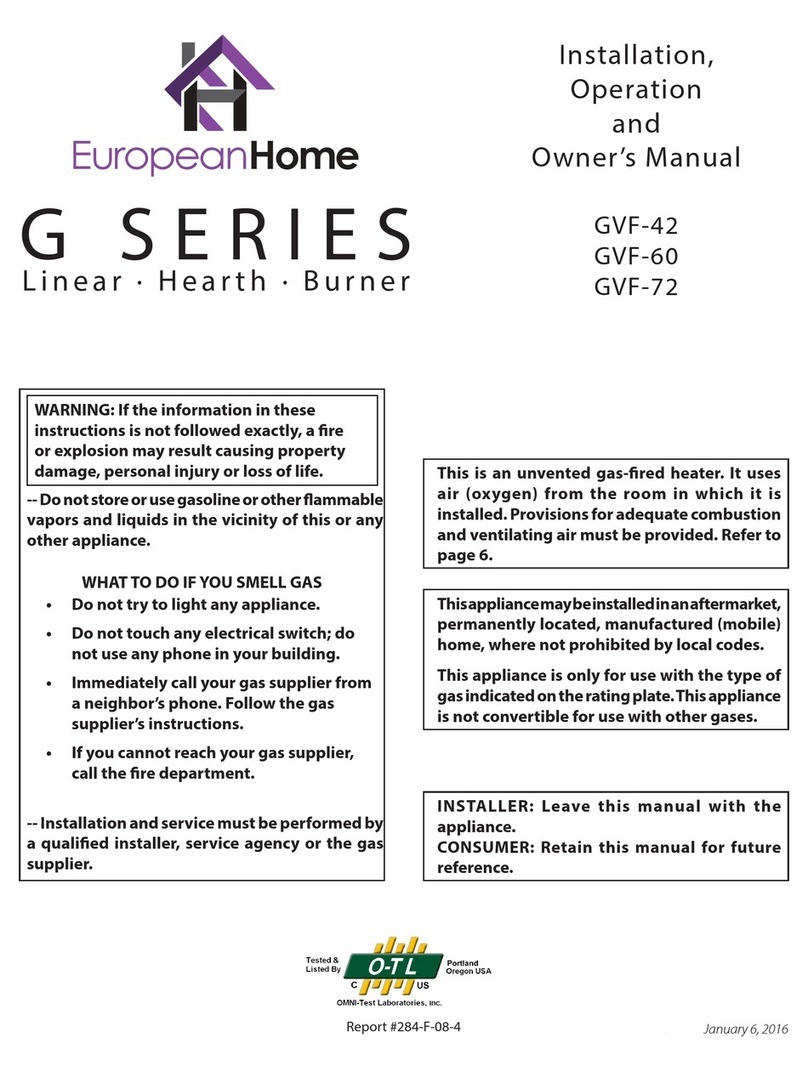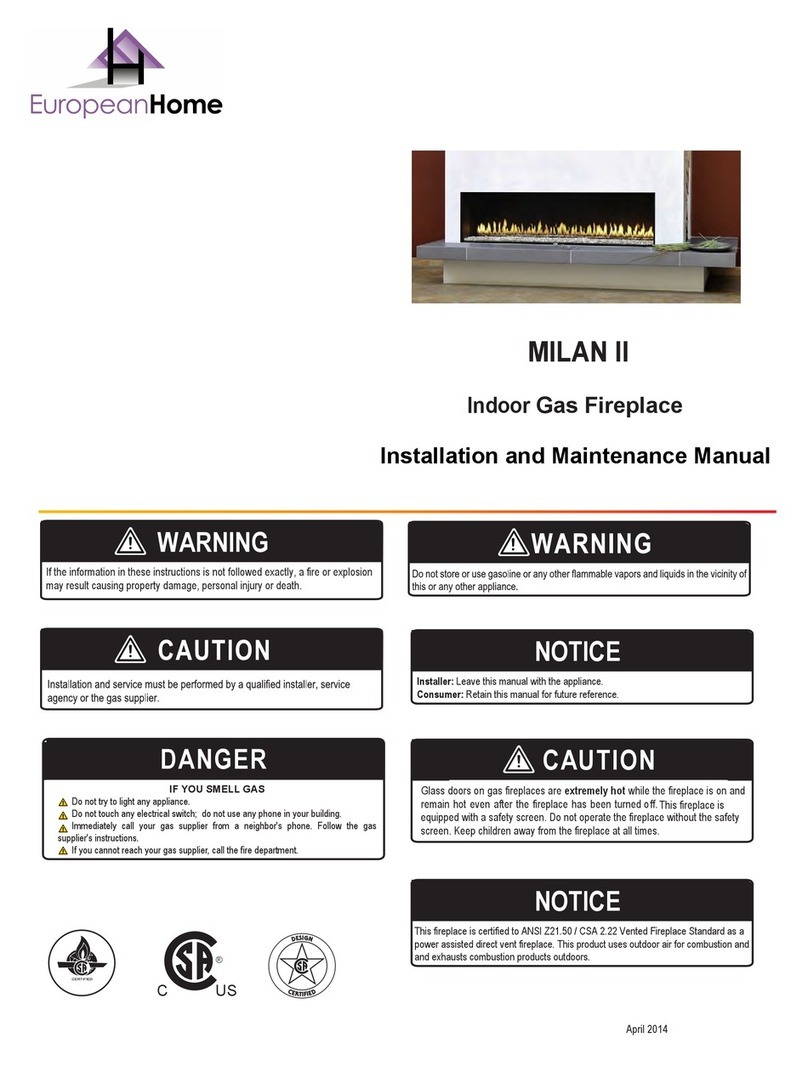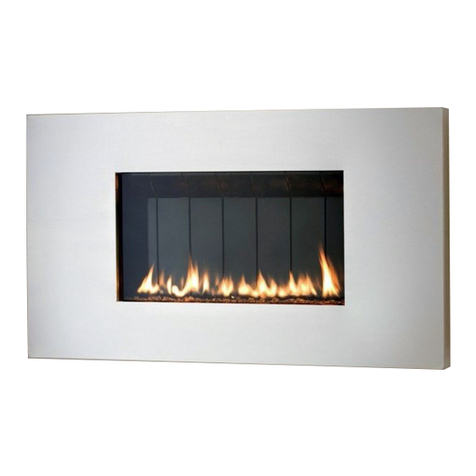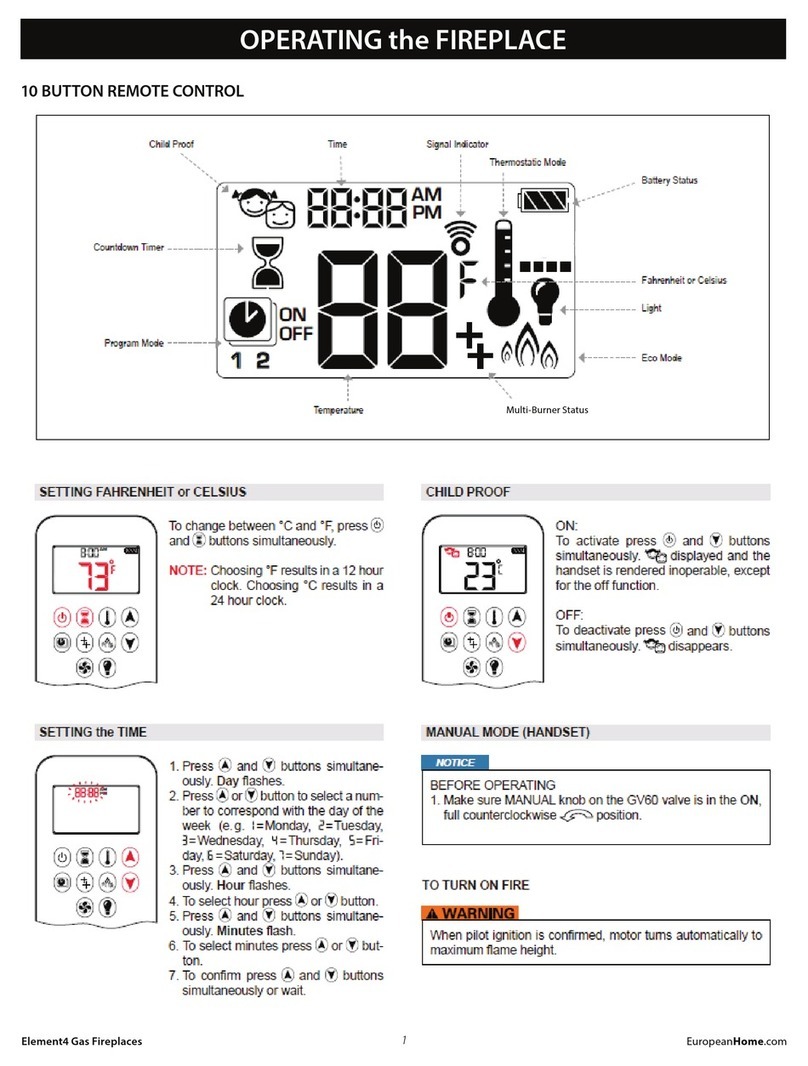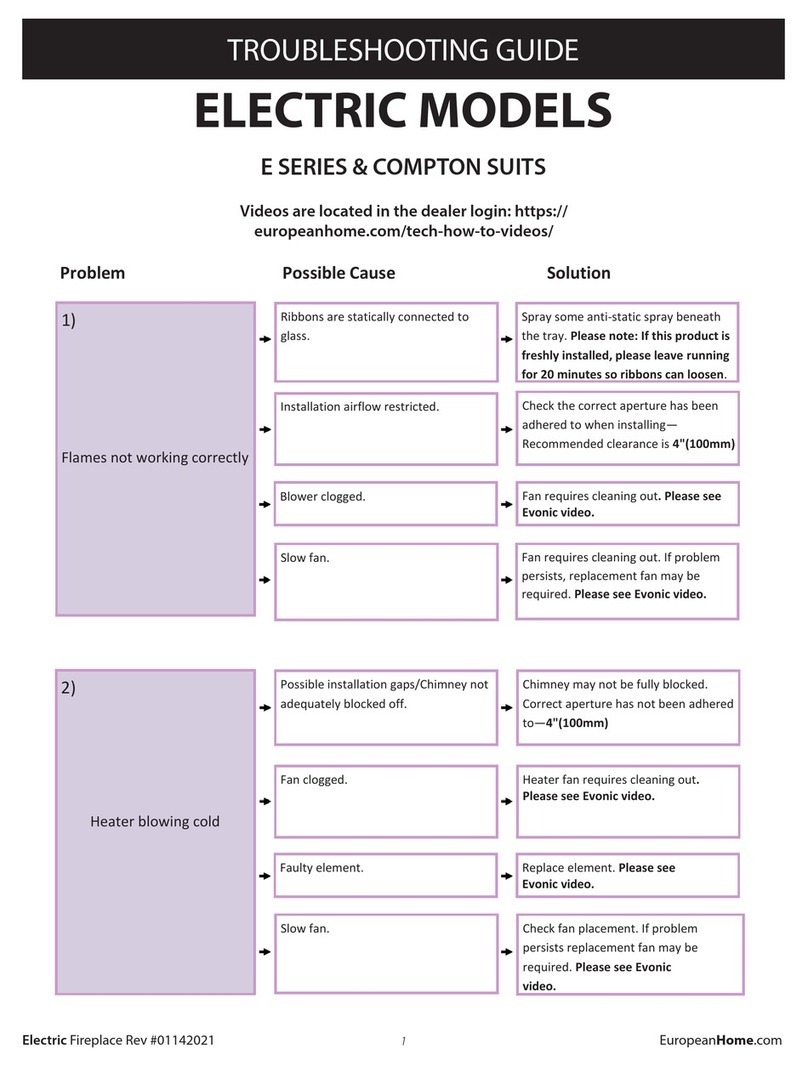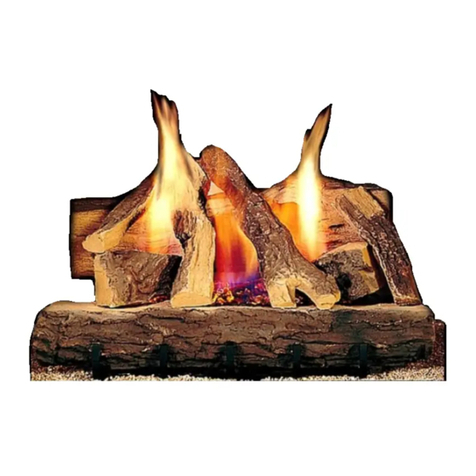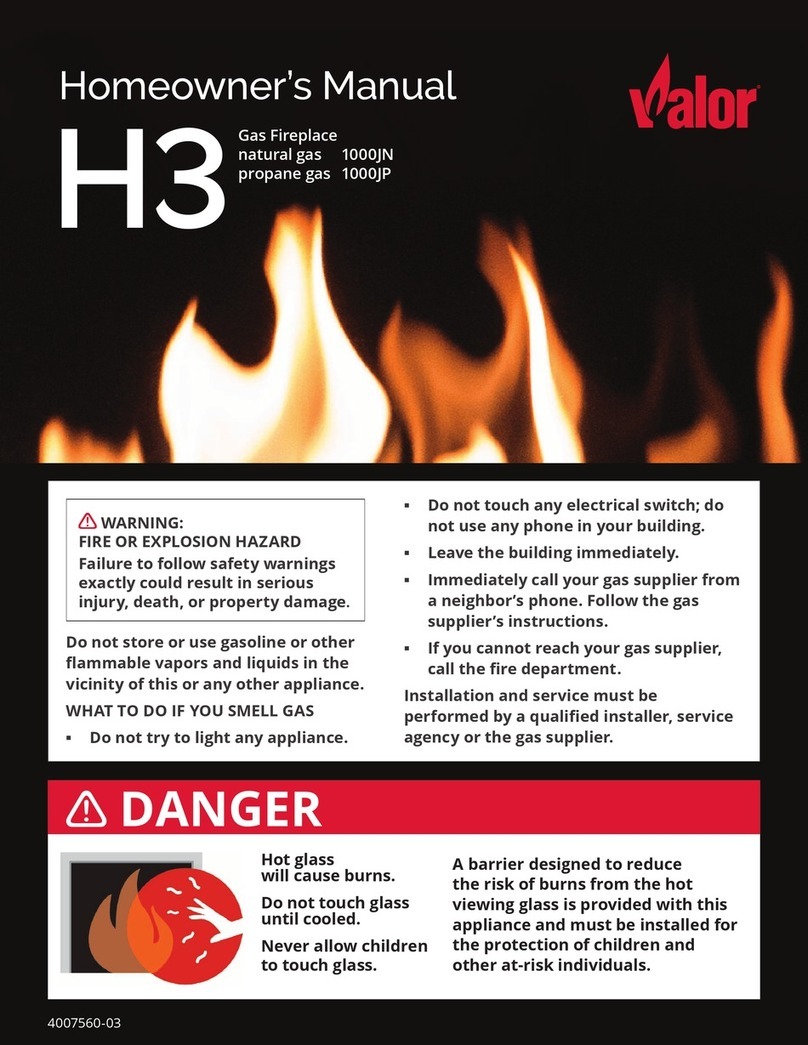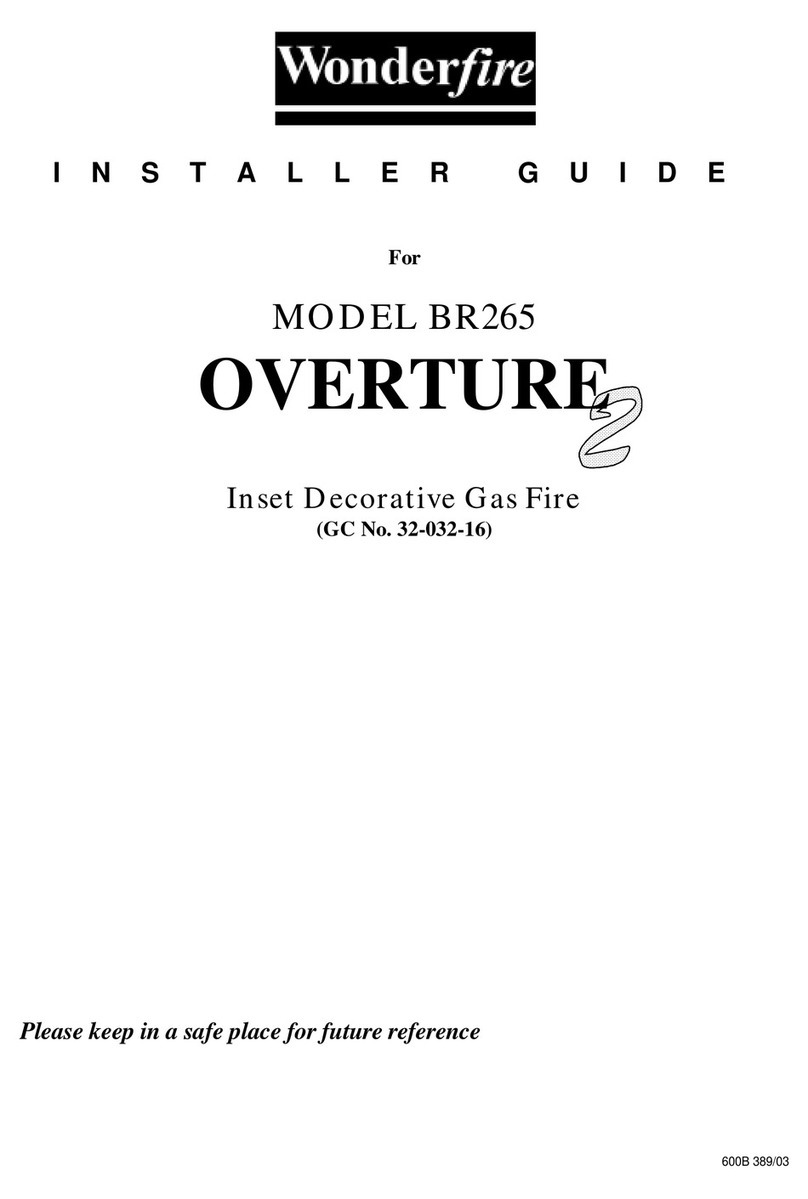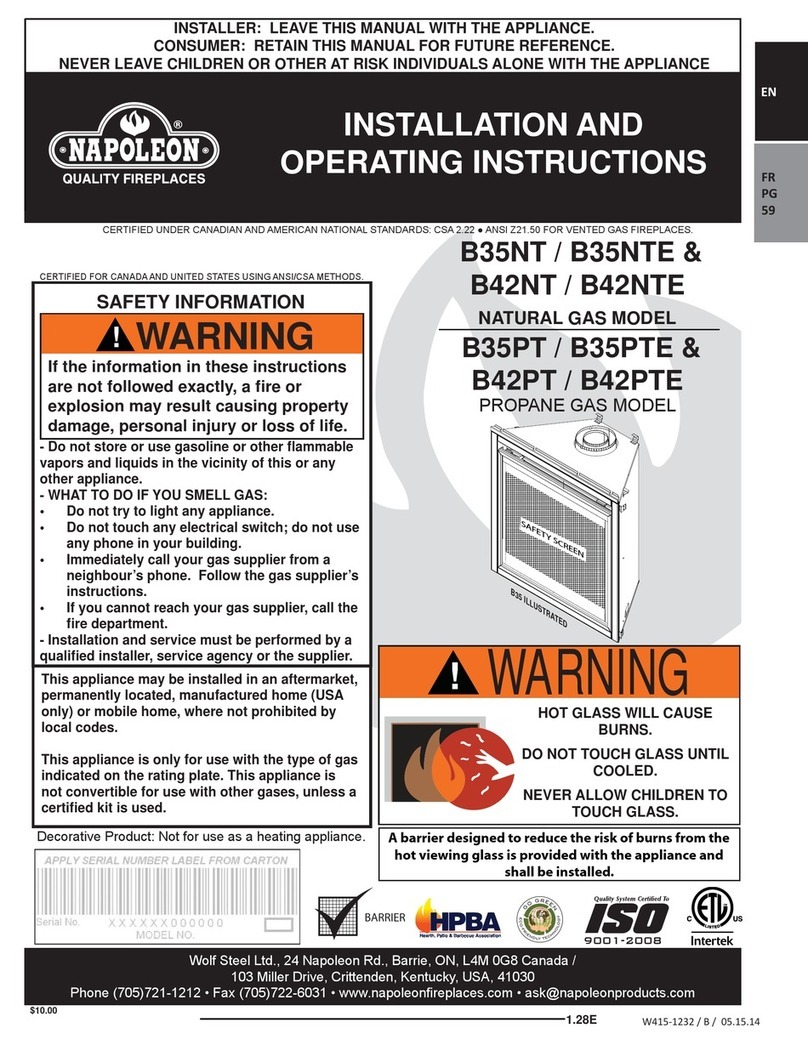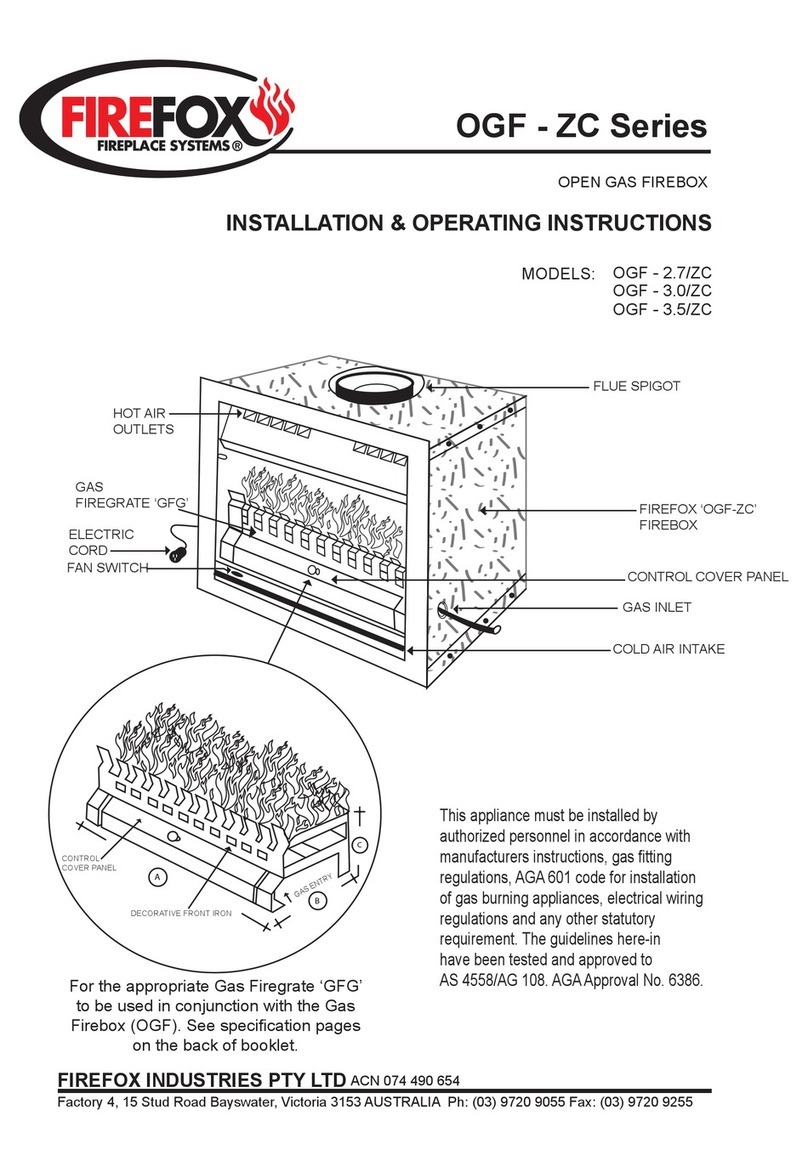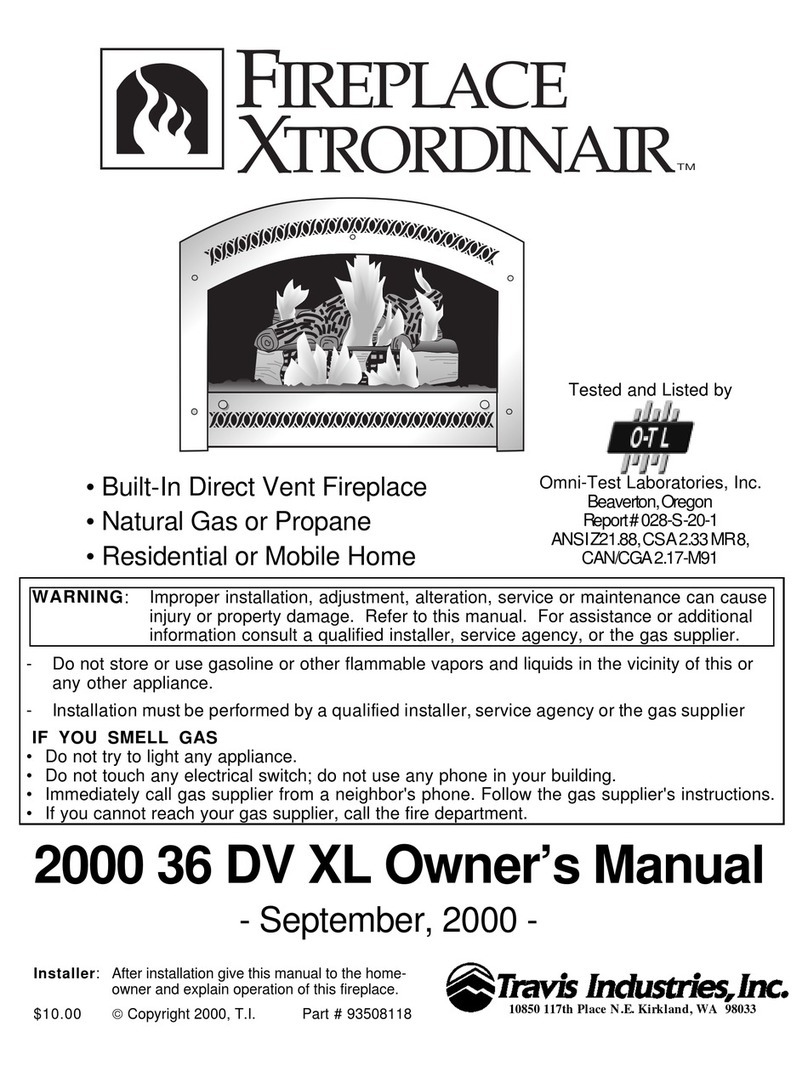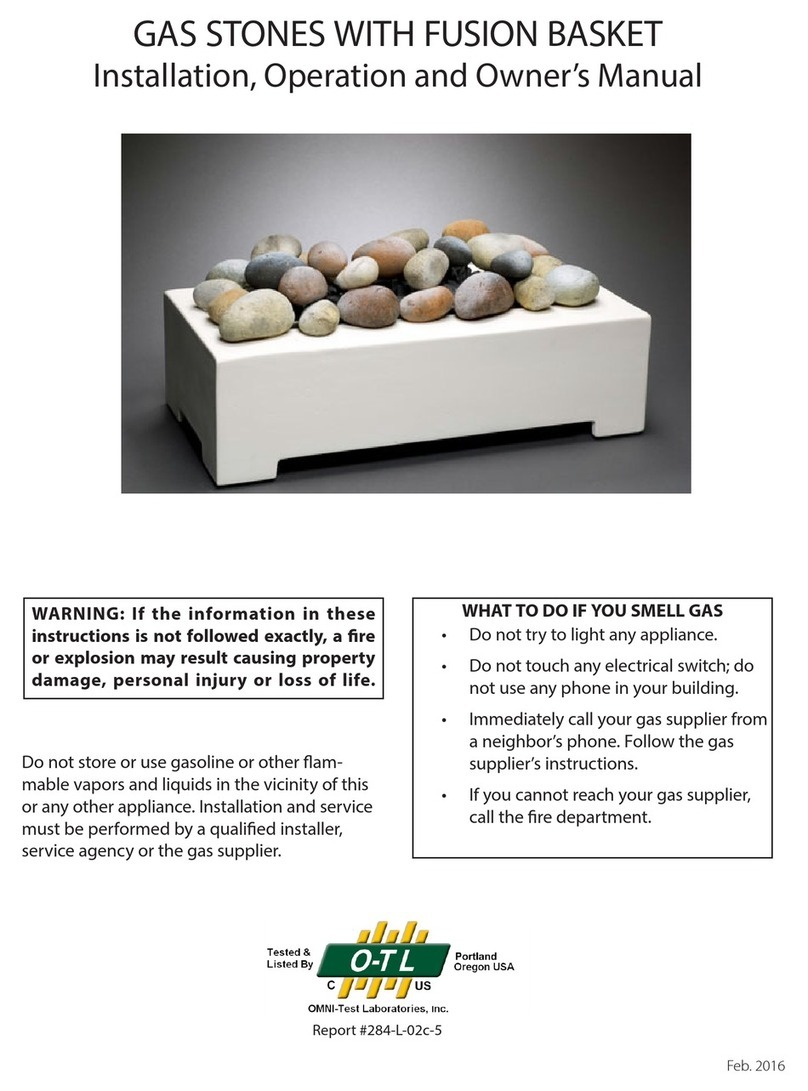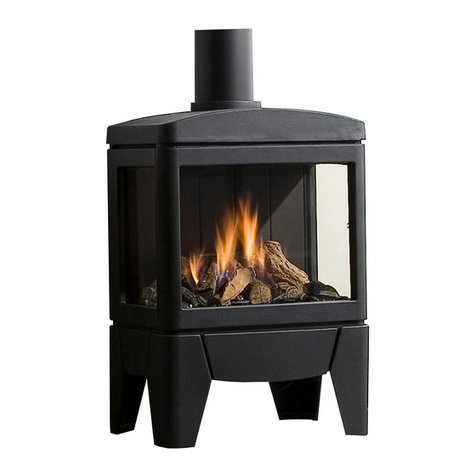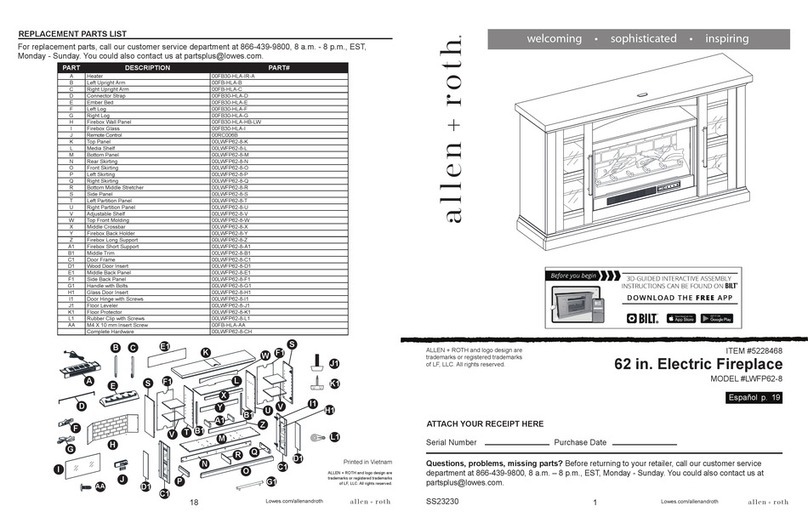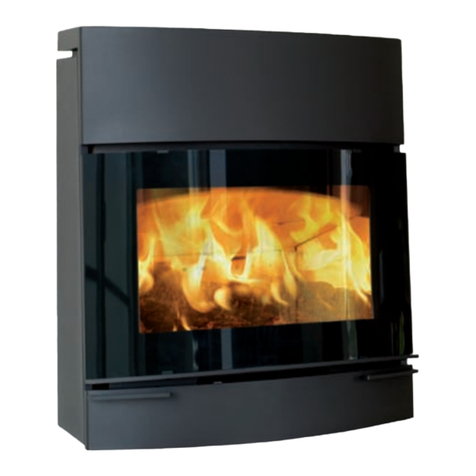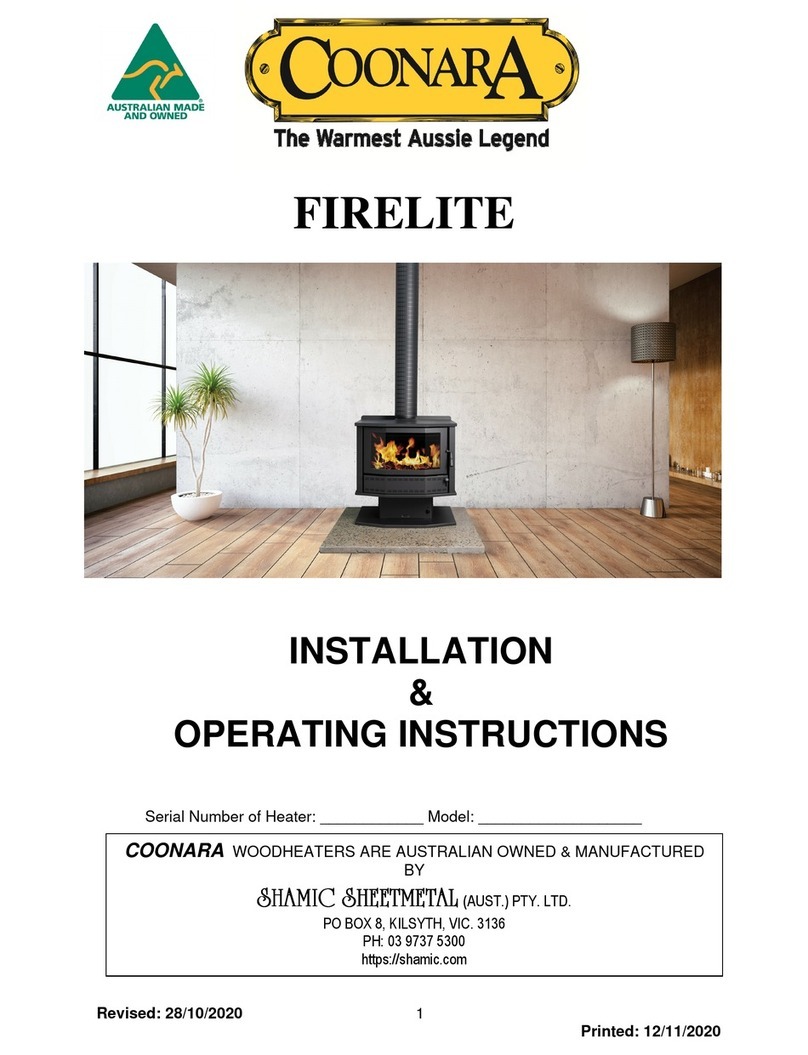
Page 3
DV 52 ST See-thru Gas Fireplace
rev.110329
Introduction
About this Fireplace:
The DV 52 ST (See-thru) are replaces with a linear-style burner. These replaces can
be converted to either a Top Vent or Rear Vent application.
The DV 52 ST (See-thru) is rated for Natural Gas at 40,000 Max. BTU/H (11.73 kW)
input and 34,000 Min. BTU/H (9.97 kW)
• DV 52 ST; Top Vent, Millivolt Pilot.
• DV 52 ST E; Top Vent, Electronic Ignition.
This manual covers installation, operation and maintenance. Lighting, operation
and care of this replace can be easily performed by the homeowner. However, all
installation and service work should be performed by a qualied or licensed installer,
plumber, or gas tter who is qualied or licensed by the state, province, region, or
governing body in which the appliance is being installed.
This manual covers all models and unless otherwise specied, the designation DV 52
ST refers to all variations of the model above. Sections which are specic to a particular
variation are marked with a symbol, plus the appropriate model number.
Warranty and Installation Information:
The European Home warranty will be voided by, and European Home disclaims any
responsibility for, the following actions:
• Modication of the replace and/or components including direct vent assembly
or glass doors.
• Use of any component part not manufactured or approved by European Home in
combination with this European Home replace system.
• Installation other than as instructed in this manual.
Consult your local Gas Inspection Branch on installation requirements for factory-
built gas replaces. Installation and repairs should be done by a qualied contractor.
Installations in Canada must conform to the current CAN/CGA B-149.1 and .2
Gas Installation Code and local regulations. If the optional air-circulating fan kit is
installed, it must be electrically grounded in accordance with CSA C22.1 Canadian
Electrical Code Part 1 and/or local codes.
Installations in the USA must conform to local codes, or in the absence of local
codes to the National Fuel Gas Code, ANSI Z223.1-1988. If the optional air-circulating
fan is installed, it must be grounded in accordance with local codes or, in the absence
of local codes, with the National Electrical Code, ANSI/NFPA 70-1987. Within the
State of Massachusetts this replace must comply with NFPA-54 Chapter 10.
CAUTION!
Due to its high operating temperatures, the appliance should be
located out of trac and away from furniture and draperies.
• Children and adults should be alerted to the hazards of the
high surface temperature, which could cause burns or clothing
ignition.
• Young children should be carefully supervised when they are in
the same room as the appliance.
• Clothing or other ammable materials should not be placed on
or near the appliance.
What is Combustible?
Materials that can catch re and burn are considered combustible. Any material that
is made of, or faced with, wood, wood pulp, paper, plastic or any other material that
can catch re and burn is considered combustible. Even though these materials may
have been 'ame-proofed', made 're-resistant' or are 're-rated' they are considered
combustible.
The combustibility of a material can be tested per "ASTM E136 Standard Test Method
for Behavior of Materials in a Vertical Tube Furnace at 750 Degrees C". Note that 're-
resistant' does NOT mean non-combustible.
Note: If a certain material has a core considered to be non-combustible (in accordance
with ASTM E136) but is faced with a combustible material then the material is
considered to be combustible.
When in doubt, ask for an ASTM E136 compliance statement.
What is Non-combustible?
A given material is said to be non-combustible when it cannot catch re and burn.
For example, materials made entirely, or in combinations, of, stone, brick, concrete,
tile, steel, plaster or glass are considered non-combustible.
For the purposes of the installations described in this Manual, those materials that
have passed the ASTM E136 tests are considered to be non-combustible.
As of this writing, the materials listed below are reported by their manufacturers to
be non-combustible (in accordance with ASTM E136):
• James Hardie Building Products, Inc.:
HardieBacker™ ¼” Cement Board
• U.S. Architectural Products, Inc.:
Versaroc® Cement Bonded Particle Board
Cem-Clad® Cement Panel























